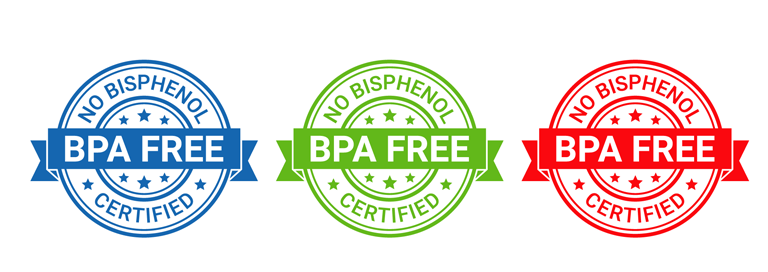In the U.S., phthalates and other estrogen mimickers are responsible for more than 100,000 premature deaths in older Americans every year. But you can protect yourself by taking one simple step.
Let me explain…
Over the course of one day, you are exposed to tens of thousands of synthetic chemicals.
These toxins are everywhere – in the foods we eat, the fabrics we wear, the toiletries we put on our bodies, our household electronics, and the furniture we sit on.
You might not think about the dangerous, drug-like effect they have on your health…
But according to researchers, these everyday chemicals are linked to 107,000 premature deaths among seniors each year.1
By now, you probably only buy products with labels like “BPA-free,” “paraben-free,” or “phthalates-free.” And you’re probably happy that these chemicals are being phased out and replaced.
I urge you not to be fooled.
Researchers are already discovering that the more than 50 substitute chemicals manufacturers are using instead are just as harmful to your health.
Some are even worse.2
It’s easy to see why. After all, these “safer replacements” have almost the exact same chemical structure as BPA. So, of course, they’d act similarly in your body.
New research on these replacement chemicals backs this up…
A recently published study of 171 pregnant women found rising exposure to the BPA substitutes Bisphenol-S (BPS) and Bisphenol-F (BPF).
It’s worth noting that the key steps for healthy male sexual development occur during pregnancy. This makes rising exposure to BPS and BPF, both of which affect reproductive health, particularly concerning for future generations.
But these dangerous compounds aren’t just a threat to pregnant women and their children – they now threaten all of us.
It’s especially worrying that so little research has been conducted on these substitute toxins, even as their use increases. But it’s already
clear they are not safe alternatives.-
- Bisphenol-S (BPS): This compound has almost entirely replaced BPA. But it’s just another estrogen mimicker. It has also been shown to be a thyroid hormone disruptor and may also cause DNA damage and raise the risk of heart disease.3,4
- Bisphenol-F (BPF): Another replacement for BPA, this chemical cousin has also been shown to have significant hormone-disrupting effects. Studies reveal it can alter organ weight, cause reproductive damage, and alter enzyme expression. BPF also greatly increases the risk of obesity.5,6
Protect Yourself In A Plastic World
Unfortunately, your body can’t keep up with all the hormone disrupters in our modern environment. That’s why I recommend supplementing to help metabolize excess estrogen and eliminate hormone disrupters from your body.
-
- SAM-e. This molecule promotes the excretion of estrogen while counteracting the effects of estrogen toxicity. Take 200 mg a day to start. But increase to 800 mg twice a day if a blood test reveals you have extremely high levels of estrogen.
- Alpha-lipoic acid. This antioxidant stops estrogen damage in cells and protects reproductive organs from excess estrogen. Start with 250 mg a day. But you can take up to 600 mg a day.
- DIM. This plant nutrient is a natural estrogen cleanser found in cruciferous vegetables like kale and broccoli. But you can’t eat enough of these veggies to cleanse your body properly. Supplement with one to two 100 mg capsules a day. Two capsules provide as much DIM as two pounds of vegetables.
Flush Phthalates From Your Body
I tell my patients one of the best things they can do for their bodies and their health is to start with a clean slate…
I’m talking about using IV chelation therapy to metabolize excess estrogen from these estrogen mimickers and flush it from your body.
At the Sears Institute for Anti-Aging Medicine, I inject calcium disodium EDTA directly into your bloodstream. It’s painless, and in about 90 minutes, toxins are “grabbed” by the EDTA and eliminated.
If you’re interested in making an appointment for IV chelation at my clinic, please call 561-784-7852.
And to avoid future contamination, you can’t just look for BPA-free labels. Instead, use real replacements. Things like steel or glass containers, fabric grocery bags, and unwrapped organic produce.
To Your Good Health,

Al Sears, MD, CNS
References:
1. Trasande, et al. “Phthalates and attributable mortality: A population-based longitudinal cohort study and cost analysis.” Environ Pollut. 2022 Jan 1;292(Pt A):118021.
2. Betz E. “Many BPA-free plastics are toxic. some are worse than BPA.” https://www.discovermagazine.com/health/many-bpa-free-plastics-are-toxic-some-are-worse-than-bpa. 2020. Accessed on June 22, 2022.
3. Rochester JR, Bolden AL. “Bisphenol S and F: a systematic review and comparison of the hormonal activity of bisphenol A substitutes.” Environ Health Perspect. 2015;123:643–50.
4. Xin F, et al. “Bisphenol A induces oxidative stress-associated DNA damage in INS-1 cells.” Mutat Res. 2014;769:29–33.
5. Jacobson MH, et al. “Urinary bisphenols and obesity prevalence among U.S. children and adolescents.“ J Endocrinol. September 2019:3(9);1715–1726.
6. Rochester, J. R., & Bolden, A. “Bisphenol S and F: A systematic review and comparison of the hormonal activity of bisphenol A substitutes.” Environ Health Perspect. 2015;123(7):643–650.

